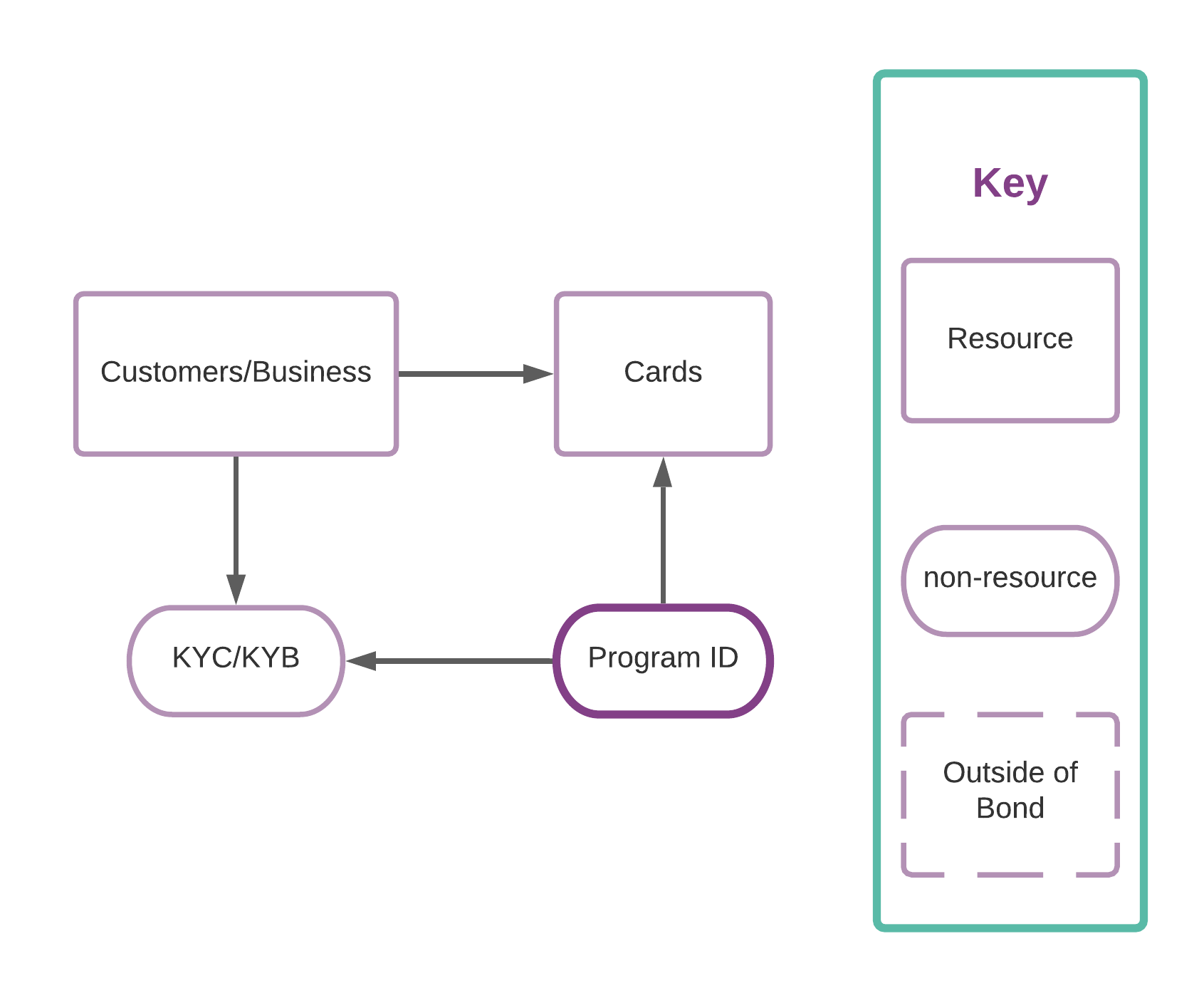Card program ID
Description of the Bond Program UUID and its relationship to the relevant accounts.
A program ID is a UUID that represents a partnership between you and a bank. You may partner with multiple banks to offer a range of financial products to customers. Each of these partnerships is represented within the Bond platform by a unique program_id.
Program IDs and your customers
The following chart illustrates how the program ID relates to APIs that require program_id as a body parameter in requests.

Bond provides infrastructure for you to offer banking services to your customers. Within the Bond platform, the program_id represents the relationship between a financial institution and a customer object.
If your brand has partnerships with multiple banks, you can allow your customers to have cards from more than one program. As a result, both the customer_id and the program_id are required parameters for the API request to create a card to identify the card program for which the card is being created.
The program_id is also required for KYC verification requests. Financial regulations compel banks to ensure that their customers' personal details have been verified, so the Bond KYC process must be executed for every program_id for which a customer has an account. Both customer_id and the program_id are required parameters for KYC verification requests because the combination indicates that Bond is executing verification of a particular customer on behalf of a particular bank.
Card configurations
A card configuration specifies whether a card can be used physically, virtually, or in both ways by a cardholder. It is determined by the program_id which is provided by the Bond platform based on your product's requirements.
There are three card configurations:
- Physical
- Virtual
- Dual
Physical cards will be issued and shipped to customers, and must be activated before they can be used. Virtual cards live inside a customer's mobile wallet and work only for digital purchases. Dual cards involve a physical card and a virtual card that are issued together, and thus work for point-of-sale (POS) and digital purchases.
Physical
A physical card is issued as inactive and is automatically shipped to the customer on issue. It needs to be activated before it can be used.
Virtual
A virtual card can be used in exactly the same way as a physical card, with the exception of point-of-sale (POS) terminals. As soon as you create this card, your customer can use it for purchases.
Dual
A dual card configuration results in both a virtual and a physical card being issued at the same time, each with the same card number but different CVV numbers.
When you create a dual card, its virtual card is active but the physical card is inactive until you activate it.
Once you activate the physical card, the card number, expiry, and CVV combination of the virtual card will no longer be valid. However, if the card has been added to a mobile wallet, the tokenized card information in the mobile wallet card will be updated to match the physical card details automatically without user intervention, and the BondCards SDK will automatically start showing the card information of the physical card. The cardholder experience will be that once they activate their physical card in your app, they’ll be able to continue using their card in their mobile wallet as expected.
In physical and dual card configurations, the physical card is shipped to the customer as soon as you create the card.
Supplementary cards
A supplementary card can only be created if this is enabled in the program_id for the customer. For more details, see Creating a supplementary card.
Updated over 3 years ago
